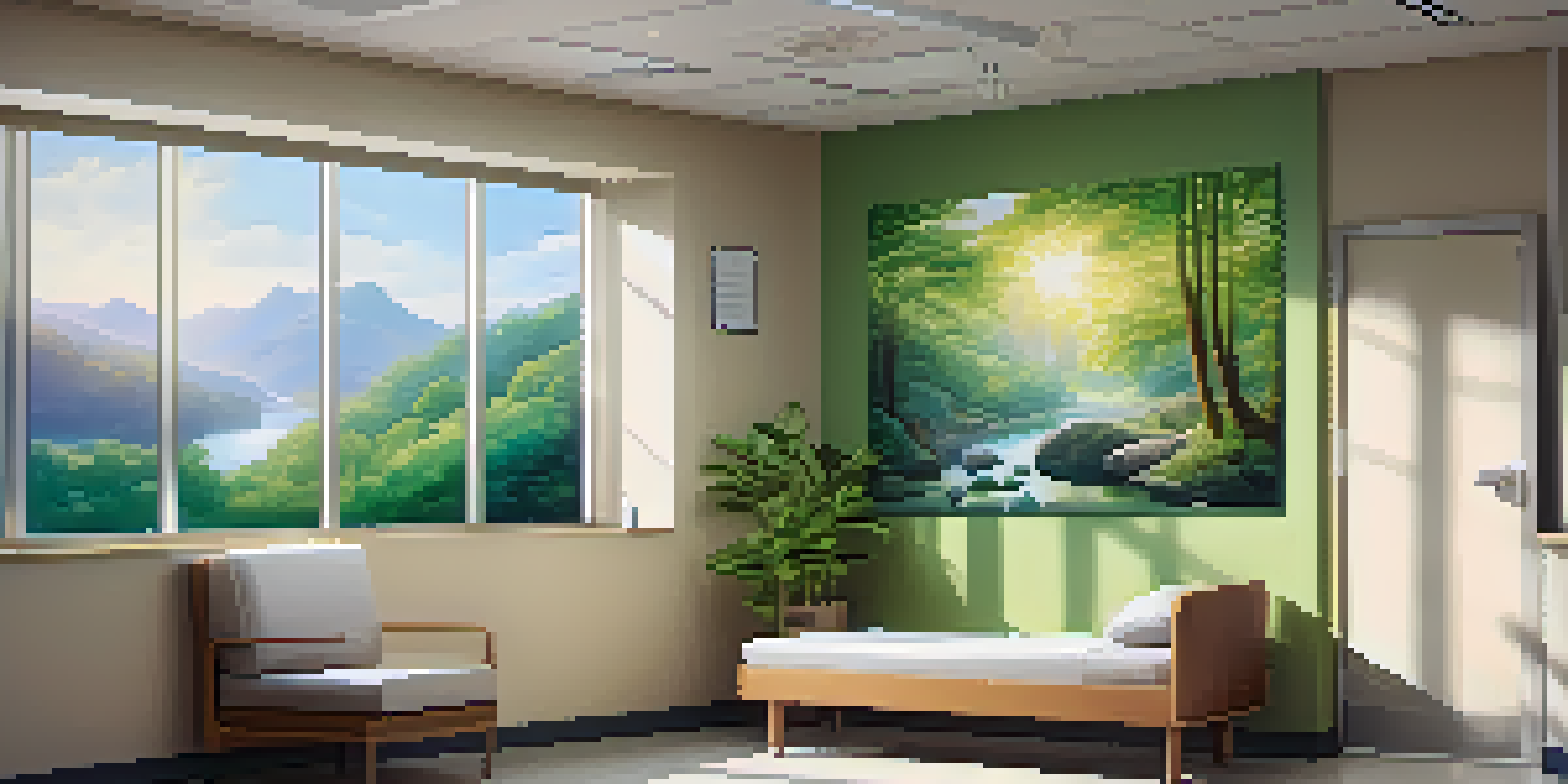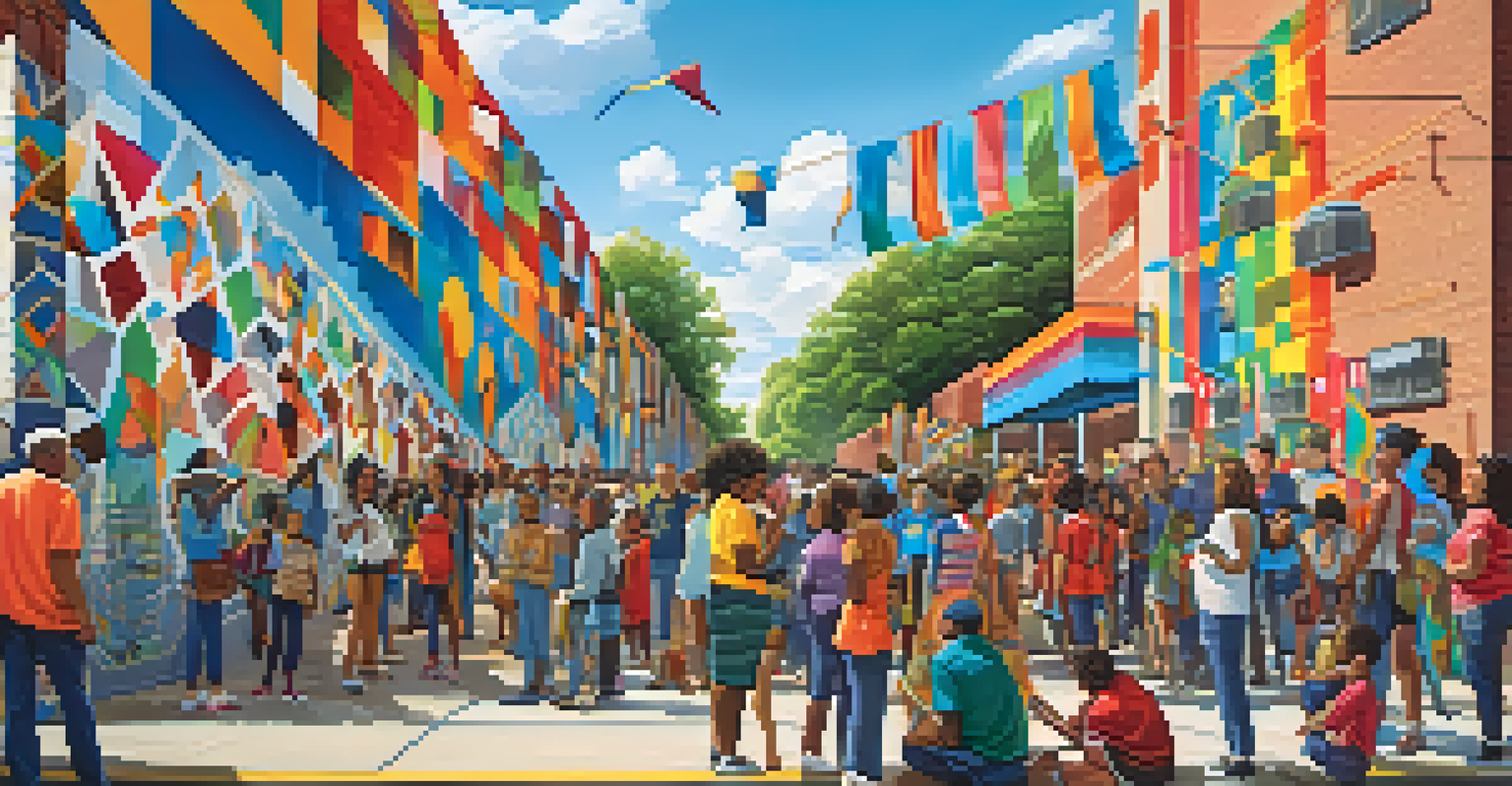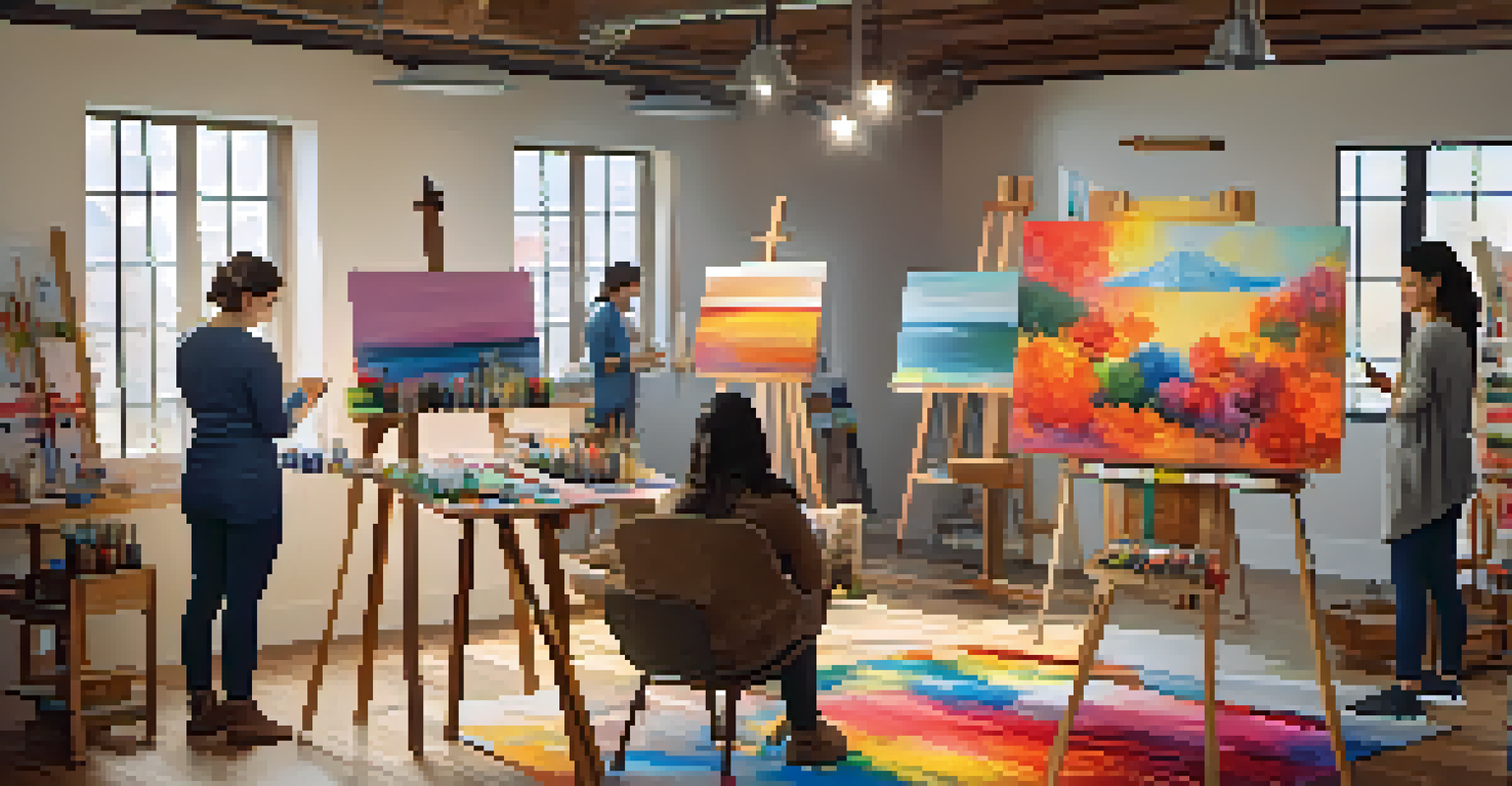Resilience in Color: The Impact of Art in Healing Spaces

Understanding the Healing Power of Art
Art has a remarkable ability to evoke emotions and facilitate healing. It goes beyond aesthetics, touching the very core of our experiences and memories. Whether through painting, sculpture, or performance, art has the potential to inspire resilience and hope.
Art enables us to find ourselves and lose ourselves at the same time.
When we engage with art, it can create a safe space for reflection and healing. This process allows individuals to express emotions that might be difficult to articulate otherwise. In many ways, art serves as a bridge between the internal and external worlds, helping us process trauma and pain.
Recent studies have shown that interacting with art can lower stress levels and enhance overall well-being. For instance, hospitals that incorporate art installations report a calmer atmosphere, which can significantly improve patient outcomes. Thus, the integration of art in healing spaces is not just beneficial; it’s essential.
The Role of Color in Emotional Healing
Color plays a crucial role in how we perceive and interact with our environment. Each color can evoke different emotions, impacting our mood and well-being. For example, warm colors like red and orange can energize and stimulate, while cooler colors like blue and green often promote calm and tranquility.

In therapeutic settings, understanding the psychology of color can enhance the healing process. For instance, blue hues are often used in mental health spaces to create a soothing ambiance, helping patients feel more at ease. This deliberate use of color can foster a sense of safety and security, which is vital in any healing journey.
Art Enhances Healing Environments
Integrating art in hospitals and therapeutic spaces promotes emotional well-being and aids in patient recovery.
Moreover, personal associations with color can vary greatly among individuals. An artwork's color palette can resonate differently with each person, making it a deeply personal experience. This subjective nature of color underscores its powerful role in healing spaces, demonstrating just how impactful it can be.
Art in Hospitals: Case Studies and Successes
Many hospitals have recognized the importance of art in healing, leading to innovative integrations in their design. For example, the Cleveland Clinic features a vast collection of artworks that aim to create a comforting atmosphere for patients and visitors alike. This approach has been linked to faster recovery times and reduced anxiety.
Creativity takes courage.
Another inspiring case is the Art for Healing program in the UK, which uses art workshops to support patients dealing with chronic illnesses. Participants often report feeling more empowered and motivated through their creative expressions. This not only aids in emotional recovery but also fosters a sense of community among patients.
These examples illustrate that art is not merely an accessory in healthcare; it is a vital component of the healing process. By investing in art, hospitals can create environments that nurture resilience, ultimately leading to healthier outcomes for patients.
Community Art Projects and Their Impact
Community art projects provide an opportunity for collective healing and resilience. These initiatives encourage individuals to come together, share their stories, and create something meaningful as a group. This sense of belonging can significantly enhance emotional well-being and foster connections among participants.
For instance, mural projects in urban areas often address social issues while beautifying neighborhoods. They can transform public spaces into sources of pride and inspiration, contributing to a community's overall mental health. When people see their stories represented in art, it can validate their experiences and strengthen communal bonds.
Color Influences Emotional State
The psychology of color significantly affects mood and can create calming atmospheres in healing settings.
Moreover, these projects can empower individuals by giving them a voice through art. Participants can explore their identities and experiences, which can be incredibly therapeutic. The collaborative nature of community art fosters resilience not just on an individual level, but on a societal one as well.
Art Therapy: A Structured Approach to Healing
Art therapy is a professional practice that uses creative processes to improve mental health and emotional well-being. By engaging in artistic activities, individuals can explore their feelings and experiences in a structured environment. This therapeutic approach is particularly beneficial for those who find traditional talk therapy challenging.
Art therapists guide clients through various art forms, helping them to express feelings that may be difficult to convey verbally. This can lead to breakthroughs in understanding and self-acceptance. The act of creating can be incredibly liberating, allowing individuals to connect with their inner selves.
Research shows that art therapy can be effective for a range of conditions, including anxiety, depression, and PTSD. As more practitioners recognize its benefits, art therapy continues to gain momentum in both clinical and community settings. Ultimately, it underscores the power of art as a tool for healing and resilience.
The Future of Art in Healing Spaces
Looking ahead, the integration of art in healing spaces is likely to evolve further. With advancements in technology, new forms of art—such as digital installations and immersive experiences—are emerging. These innovations can enhance the healing environment, making it more interactive and engaging for individuals.
Additionally, there is a growing recognition of the importance of culturally relevant art in healing spaces. By incorporating diverse artistic expressions, healing environments can resonate more deeply with individuals from various backgrounds. This cultural sensitivity ensures that everyone feels seen and valued in their healing journey.
Community Art Fosters Connection
Participating in community art projects helps individuals share their stories, enhancing collective resilience and emotional health.
As the conversation around mental health continues to grow, so will the role of art in promoting resilience. The future holds exciting possibilities for how art can shape healing spaces, making them more inclusive, vibrant, and supportive. Together, we can create environments that not only heal but also inspire hope and connection.
Conclusion: Art as a Catalyst for Resilience
In conclusion, art is a powerful catalyst for resilience and healing. It enriches our lives by providing avenues for expression, connection, and self-discovery. Whether in hospitals, community projects, or personal therapy, the impact of art on mental health is profound and far-reaching.
As we continue to explore the intersection of art and healing, it’s essential to advocate for its integration in various spaces. By emphasizing the importance of art, we can foster environments that nurture not just physical health but emotional well-being as well. The journey to resilience often begins with a single brushstroke or a shared moment of creation.

Ultimately, embracing art in healing spaces is about recognizing our shared humanity. It reminds us that we are not alone in our struggles and that together, through creativity, we can find strength, hope, and resilience.